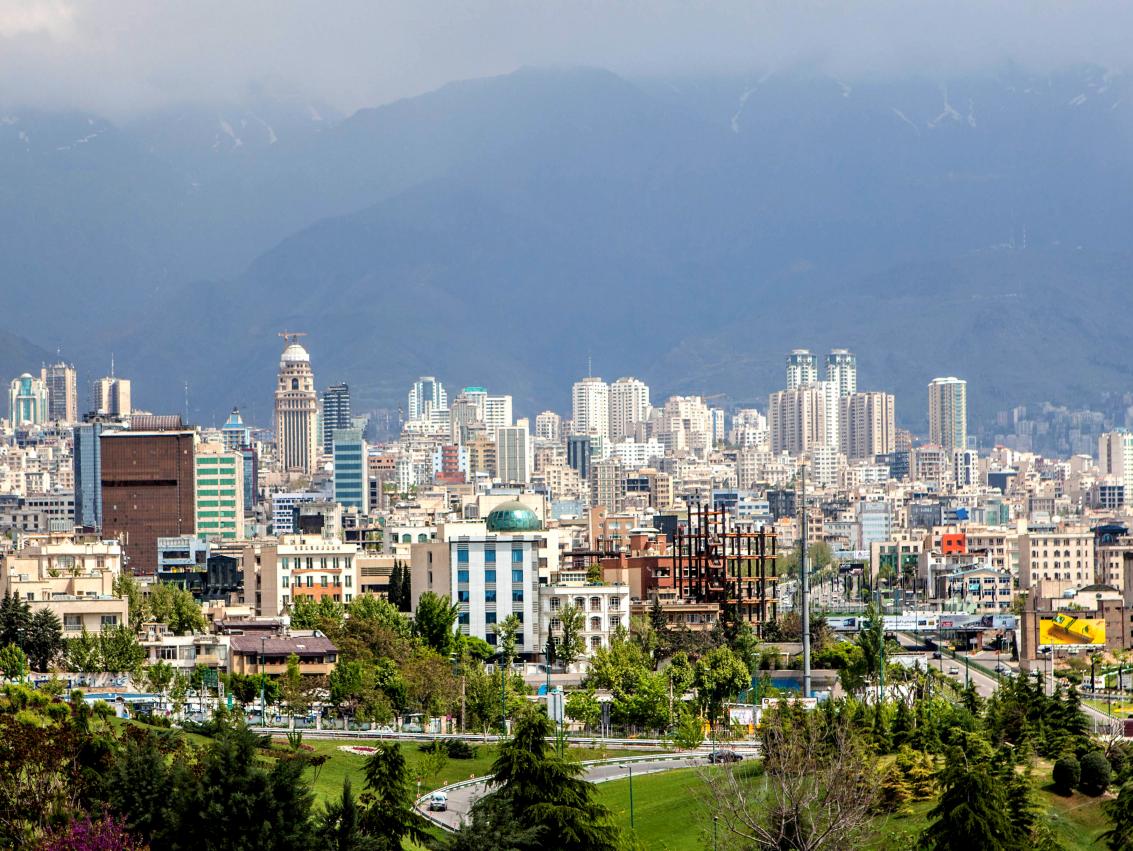Iran’s construction industry is expected to pick up momentum in the short-to-medium term, with an average growth forecast of 3.6% over the next five years. As a report by a Business Monitor International suggests, the growth forecast’s realization is highly dependent upon the outcome of negotiations between Iran and the P5+1 group of major world powers over Tehran’s nuclear energy program. The market is already showing signs of recovery and interest from international firms is on the rise.
The report predicts that Iran’s construction industry would grow by 2.8% in 2015 after an estimated 1.4% growth this year. BMI’s more positive outlook for the industry is based on reduced economic sanctions as a result of an interim deal signed last November between Tehran and P5+1, low base effects, increasing interest from foreign companies, and a high demand for infrastructure projects. There are, however, high risks associated with the country’s challenging macroeconomic picture and its weak business environment.
Overall, Iran’s macroeconomic outlook will remain highly influenced by developments in the nuclear negotiations. BMI analysts believe the ongoing talks between Iran and the P5+ 1 group, comprised of the United States, Russia, China, France, Britain and Germany, will continue over the next two years. However, they do not expect a ‘permanent’ agreement to be reached in 2015.
BMI’s Country Risk team sees a 30% chance of a breakdown in talks over the coming four to 12 months, and a 25% chance of a breakthrough in the same period. Should negotiations breakdown, as the report puts it, international sanctions are expected to remain in place or even intensify, ensuring that the majority of foreign investors, which have in recent quarters shown increased interest in Iran’s market, would be forced to put on hold any plans to enter the country. On the other hand, a breakthrough and the subsequent easing of oil sanctions would see foreign investors returning to the country given its large consumer base and great potential in key sectors such as energy and infrastructure.
Rebound Potential
Meanwhile, the report forecasts a real GDP growth of 2.8% and 2.9% in 2014 and 2015 for Iran, respectively, from a 2.9% contraction in 2013.
A September report from the London-based Economist Intelligence Unit (EIU) forecast Iran’s GDP to grow 1.7% by the end of the current fiscal year (ending March 20, 2015), up from a 1.9% contraction last year – a figure also reported by the Central Bank of Iran (CBI). The report said growth will be weak but it could rebound “much faster” if sanctions against Tehran are lifted in the next few months.
Iran and the P5+1 group have a November 24 deadline to reach a comprehensive deal over Tehran’s nuclear energy program.
According to BMI, while this is a considerable recovery, it is still below the country’s potential.
Growth in gross fixed capital formation (GFCF)– which is a good proxy for infrastructure— will gradually accelerate over the next quarters, estimated to have expanded by 3.5% in 2014 and projected to grow further to 5.0% in 2015, according to BMI’s Country Risk team. Apart from Chinese and Russian companies, French and South Korean construction firms have expressed interest in returning to the Iranian market.
Besides, the inflation rate in Iran is expected to slump in the forth decrease of 2014 and continue to decrease through 2015 as a result of high base effects, improving macroeconomic conditions and the government’s efforts to tackle inflation. The report projects consumer price index (CPI) to average 23.0% in the fiscal year 2014/15 (the year running from March 21, 2014 to March 20, 2015) and 21.0% in the fiscal year 2015/16, compared with 35.6% in the fiscal year 2013/14, which ended March 20, 2014.
It is expected that the moderation in inflation would have a positive impact on the purchasing power among Iranians and such demand in the residential and non-residential sector should benefit.
Furthermore, housing prices in Iran are projected to remain around current levels in 2015, largely as a result of lack of appropriate housing units. Recent estimates also indicate that over the next five years, housing inflation will decline as an improving macroeconomic environment and the government’s efforts to promote private sector involvement in the residential construction sector is highly likely to result in an uptick in housing supply.
After months of stagnation, Iran’s housing market improved in the sixth month of the current Iranian year (August 22–September 23), compared with last year’s sales which were deeply affected by the recession.
Although the housing market has yet to meet the expected growth for this year, the recent increase in purchases this month compared with the similar period last year is a positive signal.
The housing market boomed in the first months of summer (June 22–August 22), however, the growing curve slowed with the start of Muslim fasting month of Ramadan, in the second month of summer. The market rose again in terms of volume of transactions in the third month compensating the decline in the previous months.


